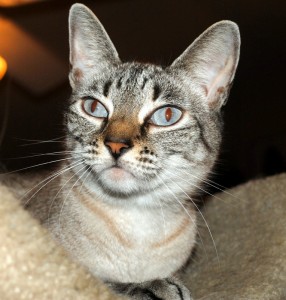 The issue of urethral obstruction in cats was new to me since my own pets have never experienced it. Basically, it is a blockage in the urethra, making it difficult or impossible to urinate. This problem is more common in male cats but females can experience obstructions from bladder stones.
The issue of urethral obstruction in cats was new to me since my own pets have never experienced it. Basically, it is a blockage in the urethra, making it difficult or impossible to urinate. This problem is more common in male cats but females can experience obstructions from bladder stones.
Sometimes, a blockage isn’t the cause. If the urethra itself is so narrow that urine cannot get through, pressure builds and the kidneys fail and cease producing urine.
Symptoms of a urethral obstruction include loss of appetite, vomiting and an inability to pass urine. Treatment is possible if you seek veterinary help quickly. At pets.webmd.com/cats/urethral-obstruction-cats, you can read about the various forms of treatment that might help.
If available treatment options don’t solve the problem, surgery is often successful. Seniors for Pets friend, Charlene Campbell, shared an article on this subject that explained the process. The surgery essentially turns “Jack” into “Jill” by cutting off his penis and forming a hole from which he will pee. This surgery is called a perineal urethrostomy, or PU.
Ms. Campbell said that two of her own cats had the surgery and lived happy, healthy lives thereafter.
 Copyright secured by Digiprove © 2014
Copyright secured by Digiprove © 2014



{ 0 comments… add one now }